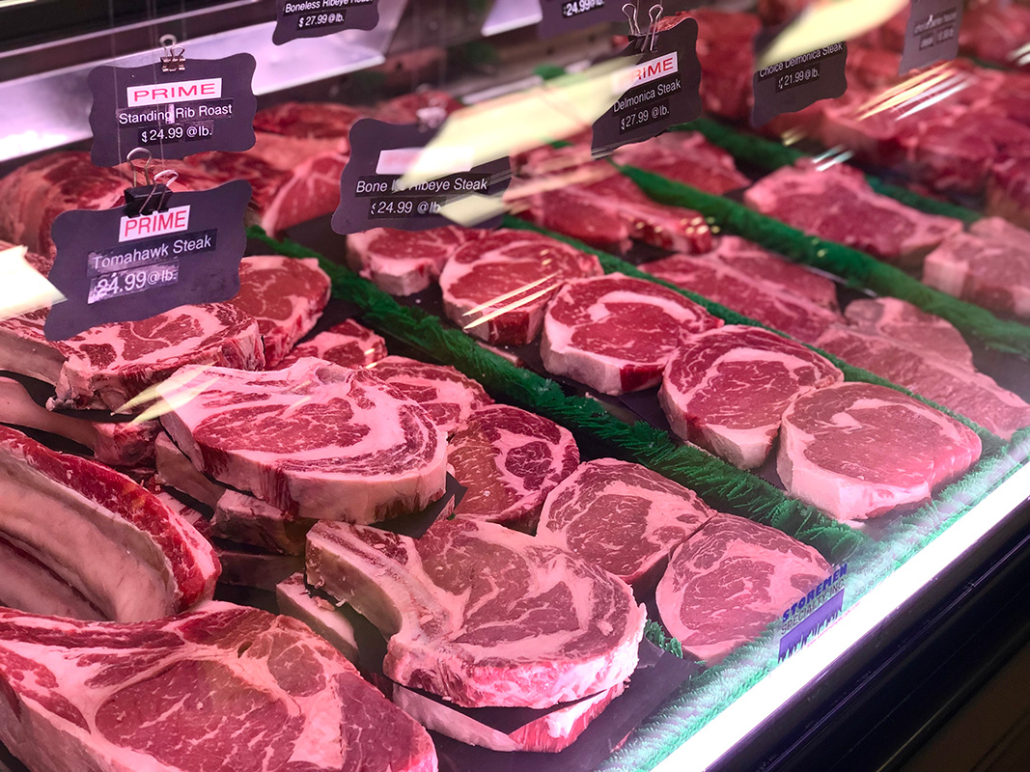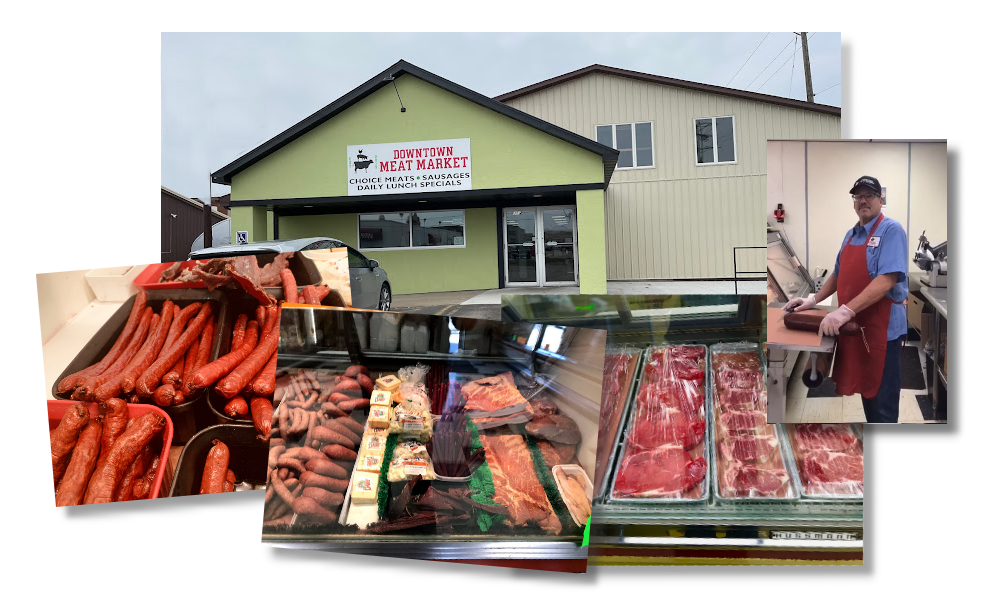Discover the Art of the Butcher's Cut in a Modern Meat Market
In the ever-evolving landscape of contemporary meat markets, the butcher's cut has transcended its conventional roots, combining olden craftsmanship with contemporary techniques. bagley farms meat market edwardsville il. Today's butchers are not just cpus of meat; they are well-informed artisans that highlight sustainability and honest sourcing. Their know-how in picking and preparing cuts tailored to specific cooking requirements provides an exceptional dining experience. What genuinely sets the modern-day butcher apart is their capability to forge a much deeper connection in between consumers and the beginnings of their meat. Exactly how do these masters equilibrium practice with development, and what implications does this have for the future of meat intake?
Development of Butchery Techniques

The mid-20th century saw butchery methods even more refined by scientific understandings right into muscular tissue biology and meat aging, improving both inflammation and preference. Developments like vacuum cleaner product packaging and refrigeration prolonged item shelf-life, permitting butchers to diversify offerings and enhance quality assurance. This duration also noted the rise of specific equipment, such as band saws and meat slicers, which increased accuracy and effectiveness in meat handling.
Digital systems now assist in monitoring animal provenance and optimizing cuts to meet specific customer choices. In addition, a renewal in artisanal butchery has arised, blending typical abilities with modern expertise to cater to customers seeking moral and sustainable meat choices.

Understanding Meat Cuts

Understanding the complexities of meat cuts is vital for both butchers and customers looking for top quality and worth. Each cut originates from a various component of the animal, passing on distinct flavors, structures, and cooking methods. Mastery of these differences not just improves culinary experiences yet likewise maximizes the energy of each carcass. For butchers, accurate cuts reflect ability and respect for the craft, ensuring very little waste and optimal return.
The main classifications of meat cuts consist of primitive, sub-primal, and retail cuts. Butchers after that damage these down further into sub-primal cuts, prior to lastly producing retail cuts offered to customers, like ribeye or tenderloin.
Comprehending muscular tissue composition is vital; muscles utilized extra frequently by the animal often tend to be tougher and are best suited for sluggish food preparation approaches, while less-used muscles, like those discovered in the loin, are a lot more tender and perfect for grilling or roasting. Experience with these differences encourages customers to make enlightened choices, enhancing their culinary ventures.
Picking Top Quality Meat
Selecting the best meat involves even more than just selecting an aesthetically appealing item from anonymous the screen. The art of selecting top quality meat needs a critical eye and understanding of particular features that symbolize freshness and quality.
Secondly, take into consideration the marbling, which refers to the white flecks of fat within the muscular tissue. Appropriate marbling is a vital sign of tenderness and taste, as it melts during food preparation, improving the meat's juiciness. Remember, higher marbling often associates with premium high quality cuts, such as USDA Prime.
Texture is one more critical aspect; meat should feel strong to the touch, not slimy or excessively soft. Additionally, bear in mind the aroma. Fresh meat ought to have a tidy, neutral smell, devoid of any sour or off-putting smells.
Pairing Cuts With Cooking Approaches
Successfully matching cuts of meat with the proper food preparation approaches is important for accomplishing ideal flavor and structure. These techniques improve the meat's all-natural flavors and make sure a juicy surface.
Alternatively, harder cuts like brisket and chuck roast are abundant in collagen, which breaks down into gelatin when cooked gradually. These cuts are ideal for braising or slow roasting, permitting the meat to soften with time and create deep, complicated flavors. Likewise, cuts such as short ribs and pork shoulder fare well with slow-cooking methods, where expanded cooking times change their robust textures into delicious recipes.
Lamb shanks and oxtail, which require long term food preparation to tenderize, are perfect prospects for cooking or slow simmering. These methods coax out abundant, hearty tastes while keeping wetness. By understanding the one-of-a-kind features of each cut, chefs and home chefs alike can raise their about his culinary productions, making certain each meal is both satisfying and remarkable.
The Butcher's Function Today
Navigating the advancing landscape of the contemporary meat market, the butcher's duty today prolongs beyond plain preparation of cuts. Contemporary butchers are cooking artisans, instructors, and supporters for sustainable techniques. They connect the gap in between the farm and the fork by guaranteeing moral sourcing, comprehending pet husbandry, and prioritizing openness in the supply chain. This shift shows the growing consumer need for quality over amount, where provenance and animal welfare are extremely important.
In enhancement to crafting accurate cuts, butchers currently involve directly with clients, supplying cooking guidance and tailoring options to suit private demands and preferences. Their experience in meat aging, marbling, and flavor profiles equips customers to make informed decisions, improving their cooking experiences. This personalized solution exhibits the butcher's developing duty as a relied on consultant in the kitchen area.
Additionally, butchers are critical in lessening waste, using whole animals to produce varied items such as sausages and supplies - bagley farms meat market edwardsville il. This comprehensive approach not only appreciates the YOURURL.com animal however likewise straightens with modern sustainability objectives. This way, the modern butcher embodies both tradition and development, adapting to an ever-changing market while preserving the creativity and stability of their craft

Conclusion
Proficiency in comprehending varied meat cuts and quality signs encourages butchers to provide educated referrals, aligning particular cuts with optimum food preparation methods. By honoring historic techniques while embracing contemporary needs, the butcher's duty remains important in today's advanced meat market.